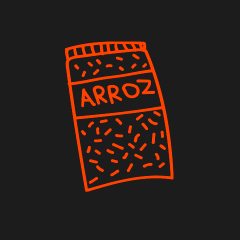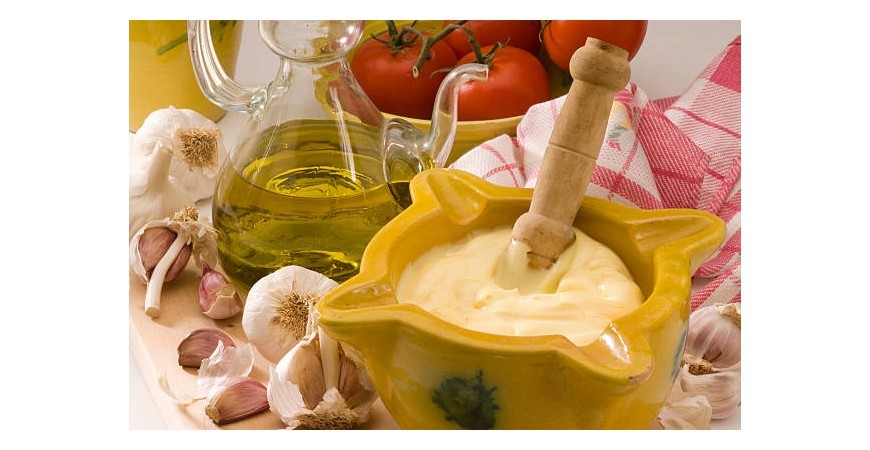How to make aioli for rice and paella: a homemade step-by-step recipe
There is a whole range of sauces we can use in our meals to mix and create new delicious flavors when paired with the right dish.
Alioli sauce, popularly known as garlic mayonnaise, is a condiment commonly used for meats, fish, or the well-known "patatas bravas", but it’s also used in certain rice and paella dishes like arroz a banda or arroz negro. In this article, we’re going to show you how to make your own homemade alioli.
Where does alioli come from?
The origin of alioli dates back to Egypt, where a similar, but much more liquid sauce existed. Its knowledge spread to the rest of the world thanks to the Romans and their peace treaties with the region.
The Romans discovered this condiment and popularized it throughout the Mediterranean regions. Over time, the recipe spread to other areas under Roman rule, eventually reaching what we now know as the Iberian Peninsula.
The original version was based on mashed garlic and olive oil, blended until a cream formed. Some people today make a “similar alioli” by mixing garlic with mayonnaise, since mayonnaise already contains some of the key components of the sauce.
Although we can confirm from experience that it’s not necessarily a bad shortcut, especially to avoid buying or making it from scratch, we’re more interested in showing you how to make the real alioli, just like we do in Valencia.
Why does alioli go so well with rice?
Alioli pairs especially well with seafood rice dishes. The reason is that it enhances the flavor of dry rice, acting as a classic complement to rice dishes from eastern Spain, like arroz a banda, arroz negro, seafood paella, or even fideuà.
Ingredients for homemade alioli
Alioli’s popularity isn’t only due to its taste, but also to the few and easily found ingredients needed to prepare it. The ingredients for this recipe are:
Ingredients list:
| 3 Garlic cloves | 1 Egg |
| Olive oil | Salt (to taste) |
The reason why egg is used today in most Valencian alioli recipes is because it creates a creamier and richer texture compared to the original preparation. It is practically impossible to achieve this texture without egg.
We recommend taking the egg out of the fridge 1 to 2 hours beforehand, so that it, like the rest of the ingredients, is at room temperature. Optionally, you can add a little lemon juice to help the sauce emulsify more easily—don’t worry, the strength of the alioli will completely mask the lemon flavor.
The amount of garlic cloves used depends on how intense you want it. You can add more garlic if you want a stronger flavor, or less if you prefer a milder taste.
Recommended utensils
Traditionally, the recipe is made using a mortar and pestle, yellow with green decorations, characteristic of Spanish villages. But if you prefer a more modern method, a blender can be used with similar results.
How to make alioli for rice and paella: step-by-step guide
We’ll show you how to make homemade alioli, dividing the steps depending on whether you're doing it traditionally with a mortar or using a blender.
Step 1: Prepare the ingredients
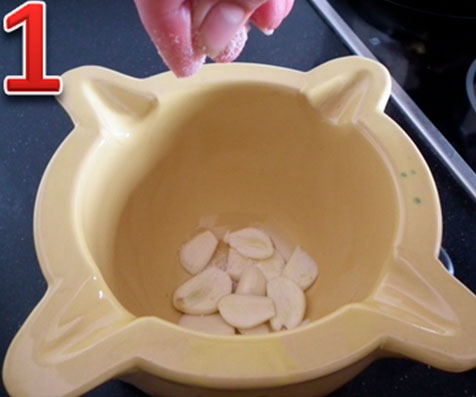
First of all, peel the garlic cloves and cut them into small pieces—the smaller, the better.
Once chopped, place them in the container you’ll use and add a pinch of salt.
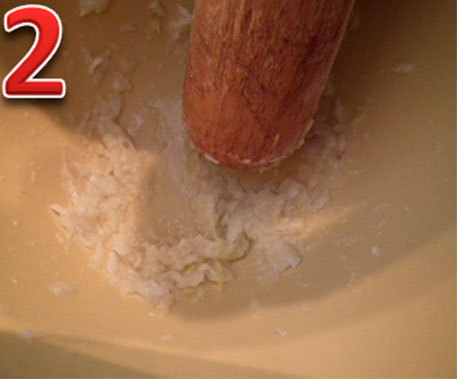
From here, mash them in the mortar or use a blender until you get a fine paste.
Step 2: Add the egg
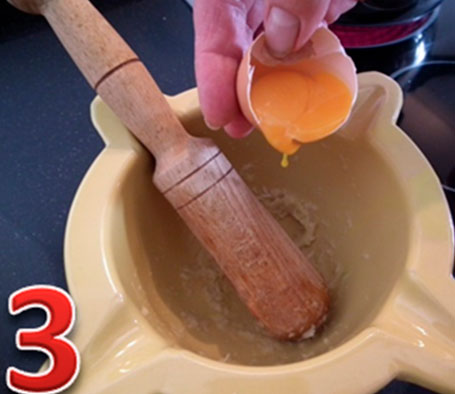
In this step, there is an important difference depending on how you want to make your alioli:
If using a mortar: Add only the egg yolk on top of the garlic paste.
If using a blender: Use the whole egg, as otherwise the blender will have trouble processing the paste.
Step 3: Emulsify until you reach the right texture
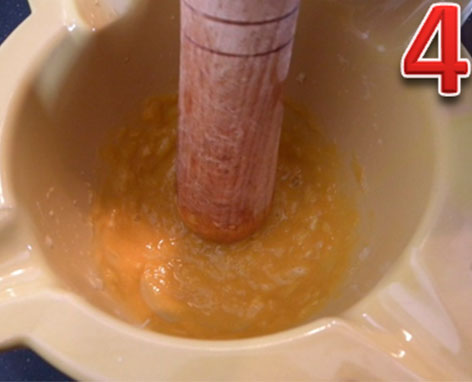
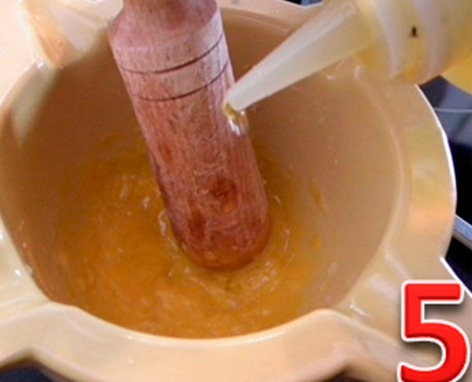
Once everything is ready, beat briefly and start adding the oil drop by drop. We do it drop by drop because pouring too much at once can cause the mixture to break.
The sauce will grow in volume as you beat, becoming thick and firm. If this isn’t happening despite constant mixing, stop adding oil and beat for a few seconds more until it thickens again.
Mortar preparation: traditional alioli recipe
Stir clockwise (right to left) without stopping. If you stop, the sauce will break and become watery, ruining the texture.
Blender preparation: quick and easy method
Start from the center with the blender blades at the bottom, keep it in that position until you see it emulsifying. Then move the blender slowly up and down, making sure the blades remain submerged so the ingredients are pulled into the center.
If your blender doesn't cover the full container, gently move it over any areas that are not blending evenly. If it separates, it's likely you accidentally stopped blending and lost the texture.
This process typically takes 5 to 10 minutes depending on how much alioli you're making. So be ready to blend for a while!
How do I know if my alioli is ready?
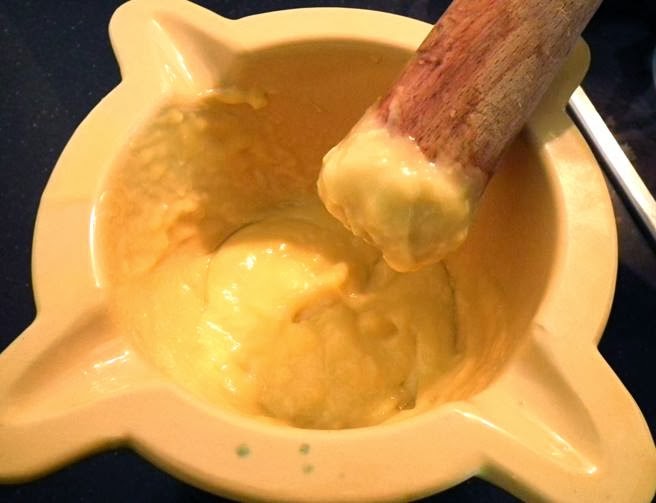
If done right, you'll have a good amount of alioli ready to serve. Make sure it has a semi-solid consistency. If it’s liquid, you can still use it, but it won’t be what most people consider real alioli.
We recommend storing it in a container that makes it easier to scoop the sauce onto your dishes.
Homemade alioli: storage, tips, and variations
How do I prevent the alioli from breaking?
Don’t worry—if your alioli breaks by accident, there are ways to fix it without starting over.
Add a few drops of water and stir vigorously in circles. This should help restore the emulsion so you can continue mixing.
How long does homemade alioli last?
Homemade alioli is best used the same day it's made, but if you cover it with foil or put it in an airtight container and refrigerate it, it can last 1–2 more days. That said, we recommend eating it the same day—it’s freshest then.
Why are some alioli sauces yellow and others white?
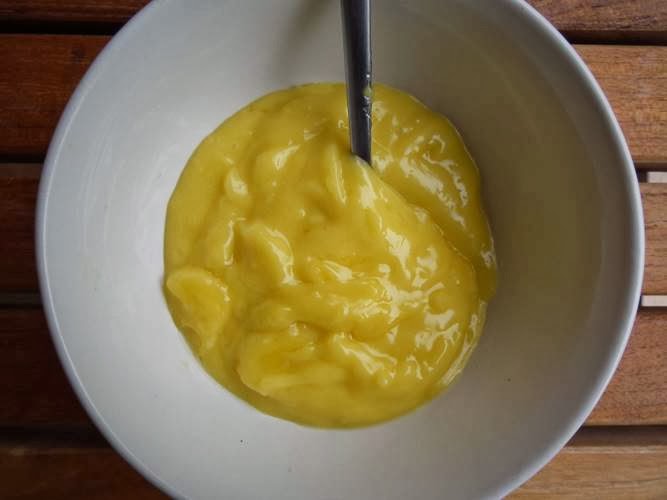
If you’ve looked up alioli recipes online, you’ve probably noticed some sauces are yellow while others are white.
The color change isn’t because of different ingredients, but due to the type of oil used: extra virgin olive oil gives a yellowish hue, while sunflower oil makes it white.
Origin of the name "alioli"
The name comes from Valencian "all i oli", which means "garlic and oil" in Spanish—the two main ingredients of the recipe. This is also where its popular name "ajoaceite" comes from.
Alternative alioli recipes to try
While the classic Valencian alioli uses only these basic ingredients, some chefs have experimented with additional or substitute elements.
Among the most common variants, black garlic alioli is a version you can even find in supermarkets.
In our culinary journey, we’ve seen other recipes like avocado alioli, apple alioli, egg-free alioli (as originally made), or even replacing oil with milk to create milk alioli for salads. In some cases, potato, nuts, or olives are added as well.
Sometimes people also garnish it or directly mix in a bit of chopped parsley or other spices.
The perfect alioli for your rice or paella
Despite all these possible variations, we recommend the classic homemade alioli recipe for general use—it’s lasted so long in our gastronomic culture for a reason.
We hope this short recipe helps you enjoy this classic sauce with your dishes.
If you want to see more content from our blog, follow this link.


